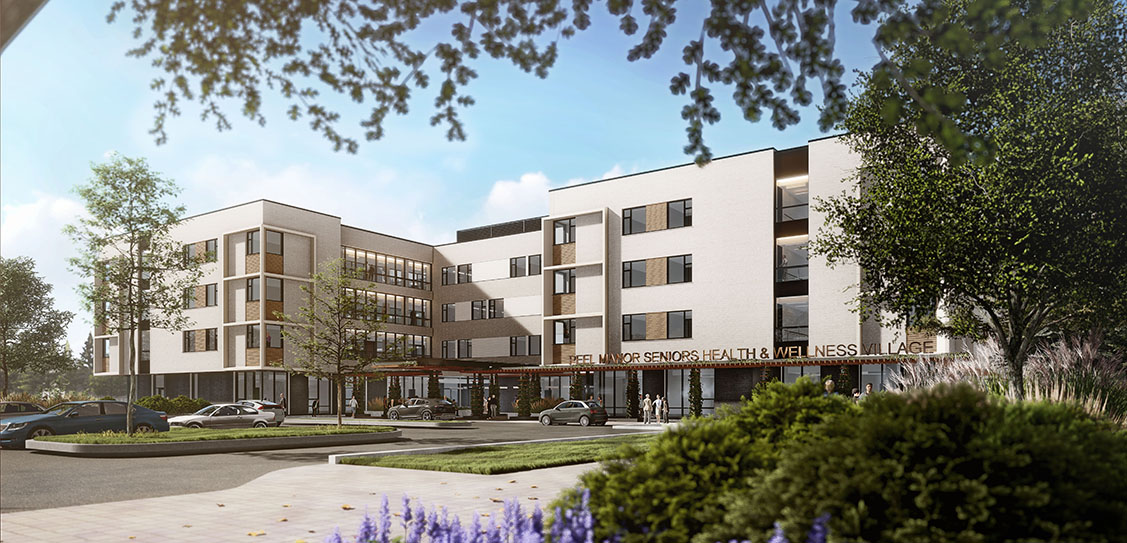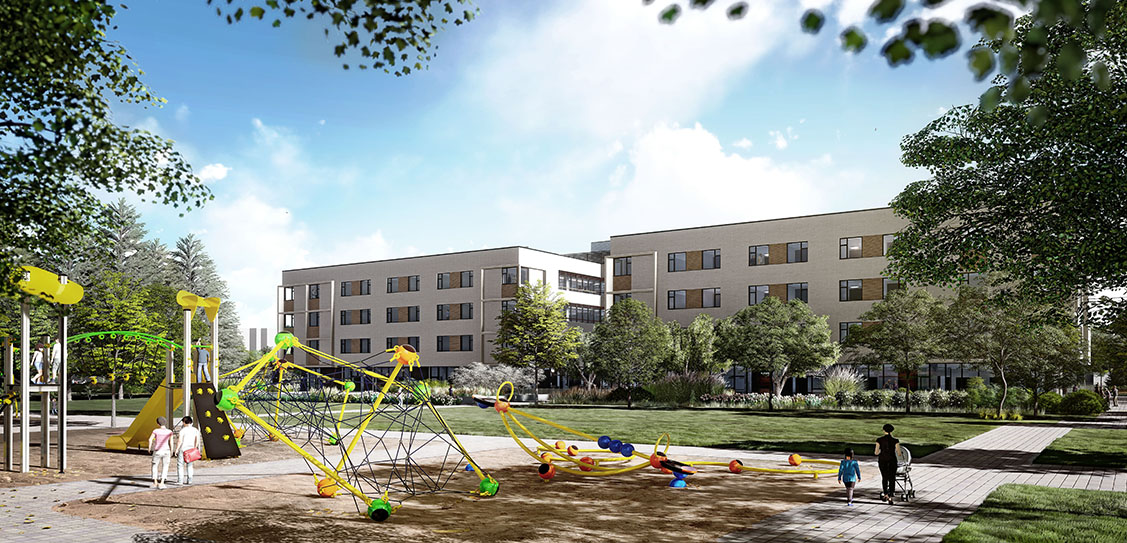Created as an ‘Age-Friendly City,’ just outside of downtown Toronto, Canada, the project creates a more connected care model by:
- Extending amenities and services into the local community,
- Designing unique features that are modeled more after an actual home environment
- Facilitating a more individualized resident experience.
Peel Manor’s high design standards are also supported by a number of infection control features, including isolation rooms, clusters of households and other future-proofing measures.
Unique design approach
There are two significant components in the design approach that contribute to creating a more compassionate and therapeutic milieu at Peel Manor.
Both of these components share a common purpose: to create meaningful engagement - engagement between residents and their environment, residents and their caregivers and finally, residents and their community.
The first component is an emphasis on accessible, high-quality connections to the outdoors.
The second component is developing purpose-built spaces that facilitates the compassion, connection and stimulation the advanced care model promotes.
Innovative infection control measures
- Peel Manor is designed to achieve a delicate balance between the domestic qualities of a home and the efficiencies of an institution with a restrictive funding model
- Peel Manor privileges an emotionally intelligent approach to care over a task-oriented one. Beyond staff education and training, nurturing connections through the design creates a more intimate and stimulating physical care environment
- Innovative space planning will enable Resident Home Areas (RHAs) in the new Peel Manor to be apportioned into much more granular households, without losing the efficiencies of a care structure driven by government funding
- Instead of ‘care’ stations - care is actually provided in the “heart” of the homes, so staff are encouraged to ambulate and engage with residents rather than sit at nursing stations
Notable proof points:
- At Peel Manor, a community hub extends the reach of the building both inside and out. Local seniors can attend the adult day program, gain access to important social and clinical services and enjoy a number of events and amenities
- These services and amenities are open to residents and the broader community as well (in the face of an outbreak, physical distancing measures will be in place)
- Residents in particular benefit from the increased stimulation from the activity and animation in and around the building and a continued sense of connection with the larger community
- Selecting a private room model over basic or shared accommodation is an important consideration for long-term care owners and operators.
- During an outbreak, private rooms most effectively allow for the isolation of sick residents. But, as a socially distant (yet, not isolating solution) solution, beds in Peel Manor can be apportioned into smaller ‘neighbourhoods’ with each ‘neighbourhood’ having access to a set of common amenities, including lounges, bathrooms, as well as outdoor patios.
- This helps to contribute to a greater sense of community, rather than embracing an isolating one bed/room model that is currently being pushed forward.
The ground level is exclusively dedicated to community-based services, including a large community hall, multi-faith centre, multi-purpose space, demo-kitchen, café / tuck shop, resource centre, therapy suite, pharmacy, physician’s office and a new, 90-person adult day centre complete with dining area, activity rooms, bathing facilities and respite suites.
Facilities can be accessed by video conferencing should an outbreak occur.
Inspired by the Butterfly Model, each floor accommodates two resident home areas of 30 people designed to be apportioned into smaller, more intimate 15-bed households with shared social spaces and homestyle kitchens that allow residents to be more involved in the preparation of their meals - this also supports physical distancing measures.
Building massing has been jogged to create a more playful exchange between indoor and outdoor spaces and create four distinct outdoor courtyards, one each off the drop-off, community hall, adult day centre dining room and support services.
In addition to courtyards and pathways, buildings featuring deep porches, shaded terraces and expansive windows create open, engaging vistas of the surrounding landscape - helping residents enjoy the outdoors, while practising safe social distancing.



